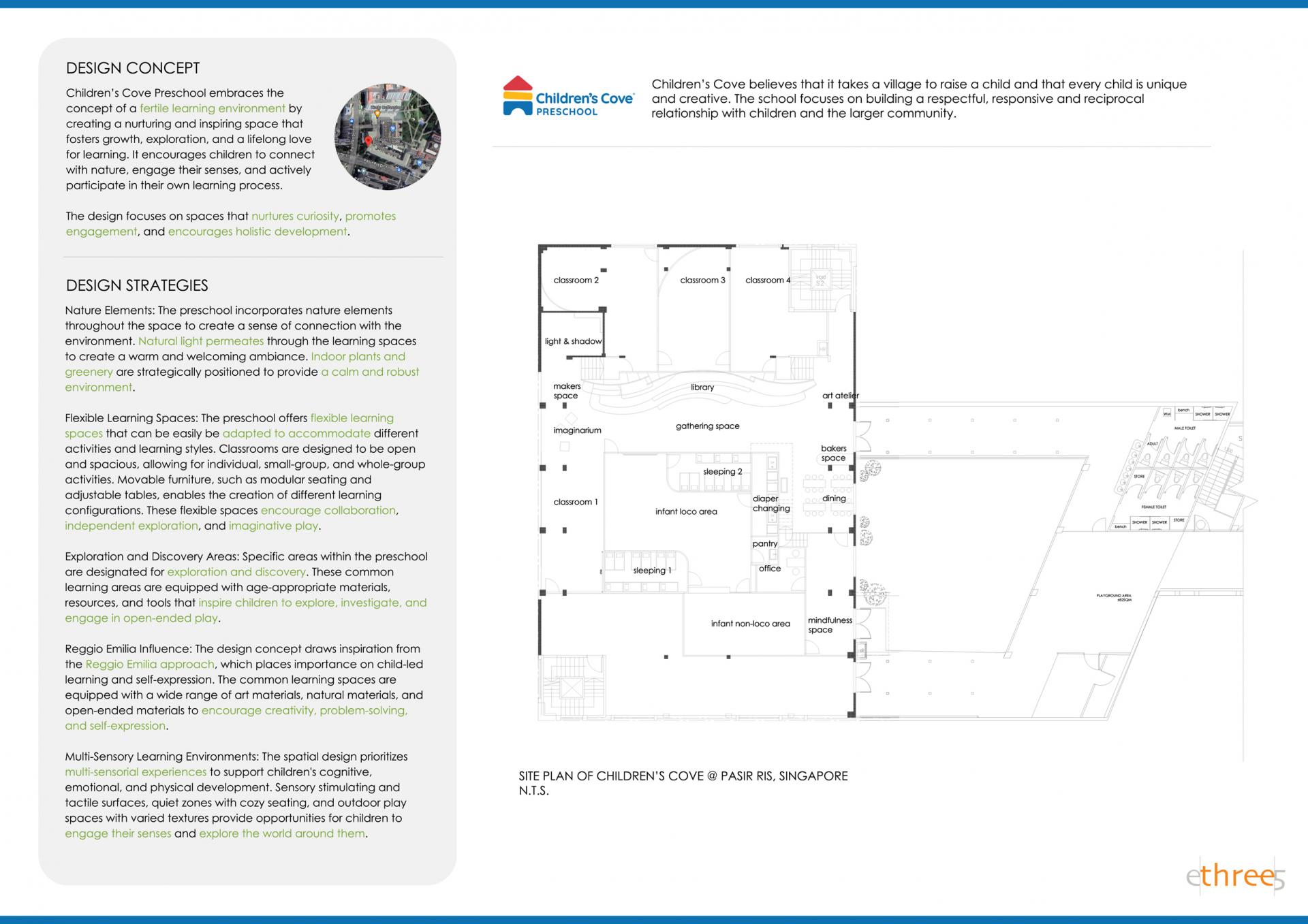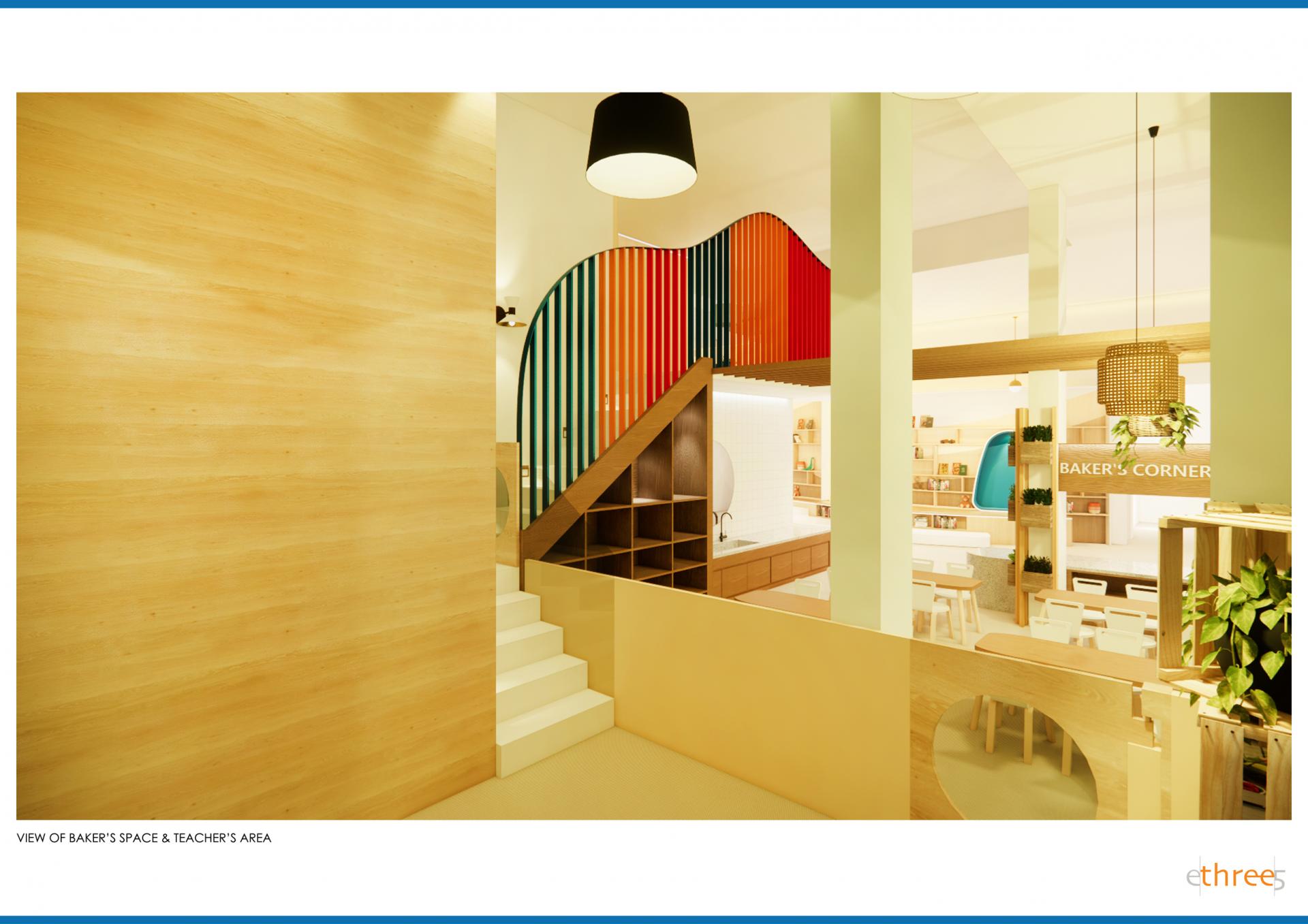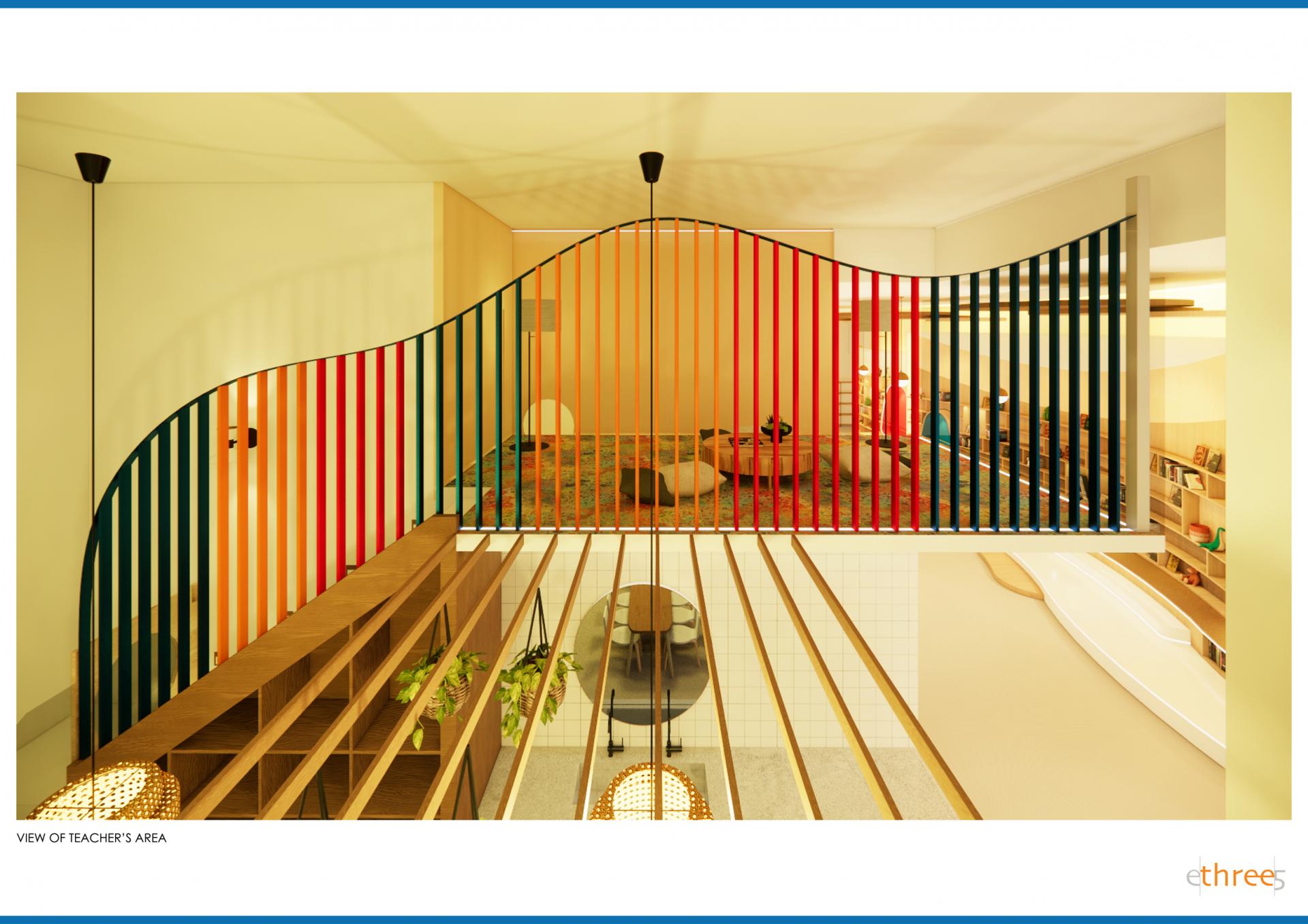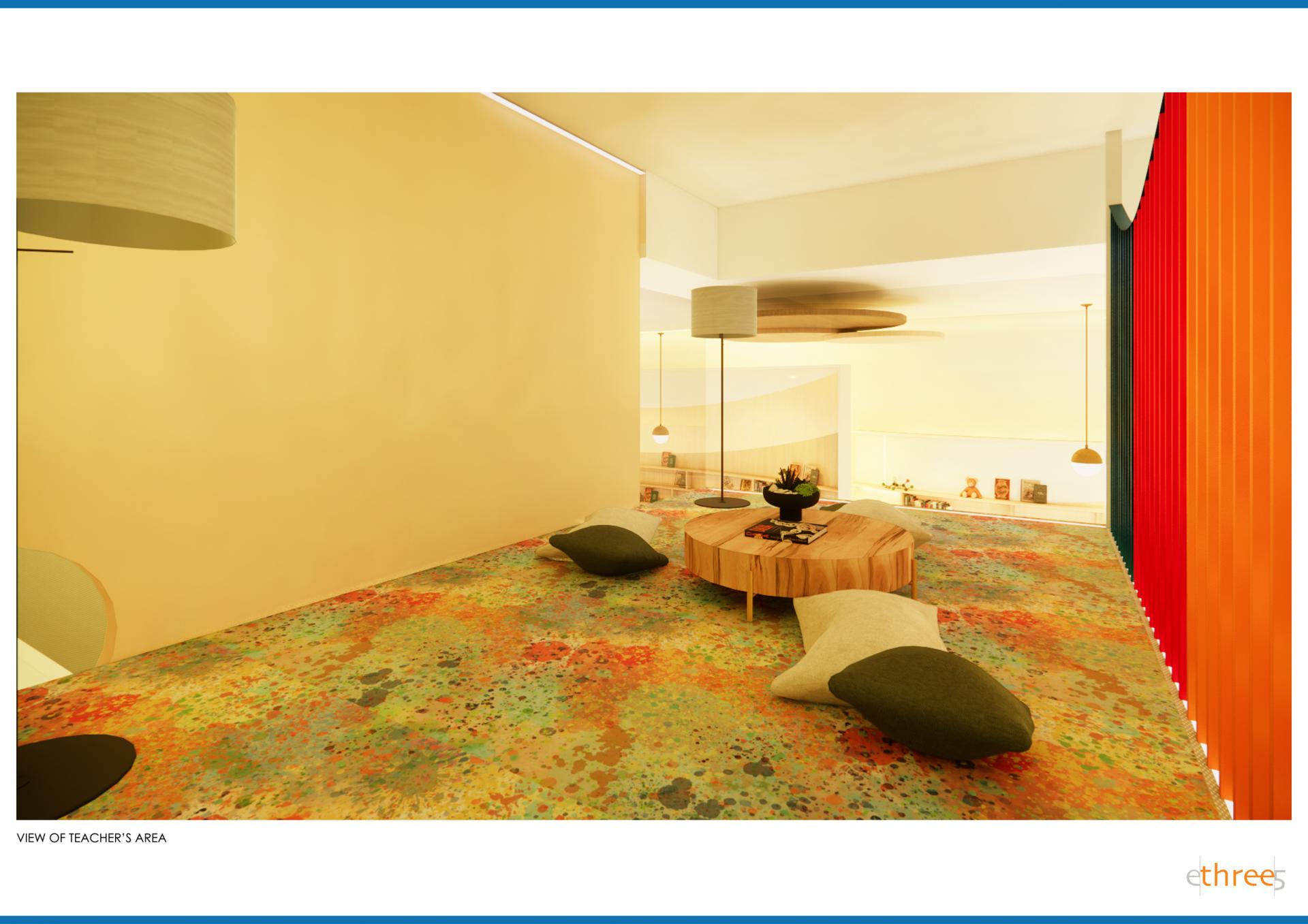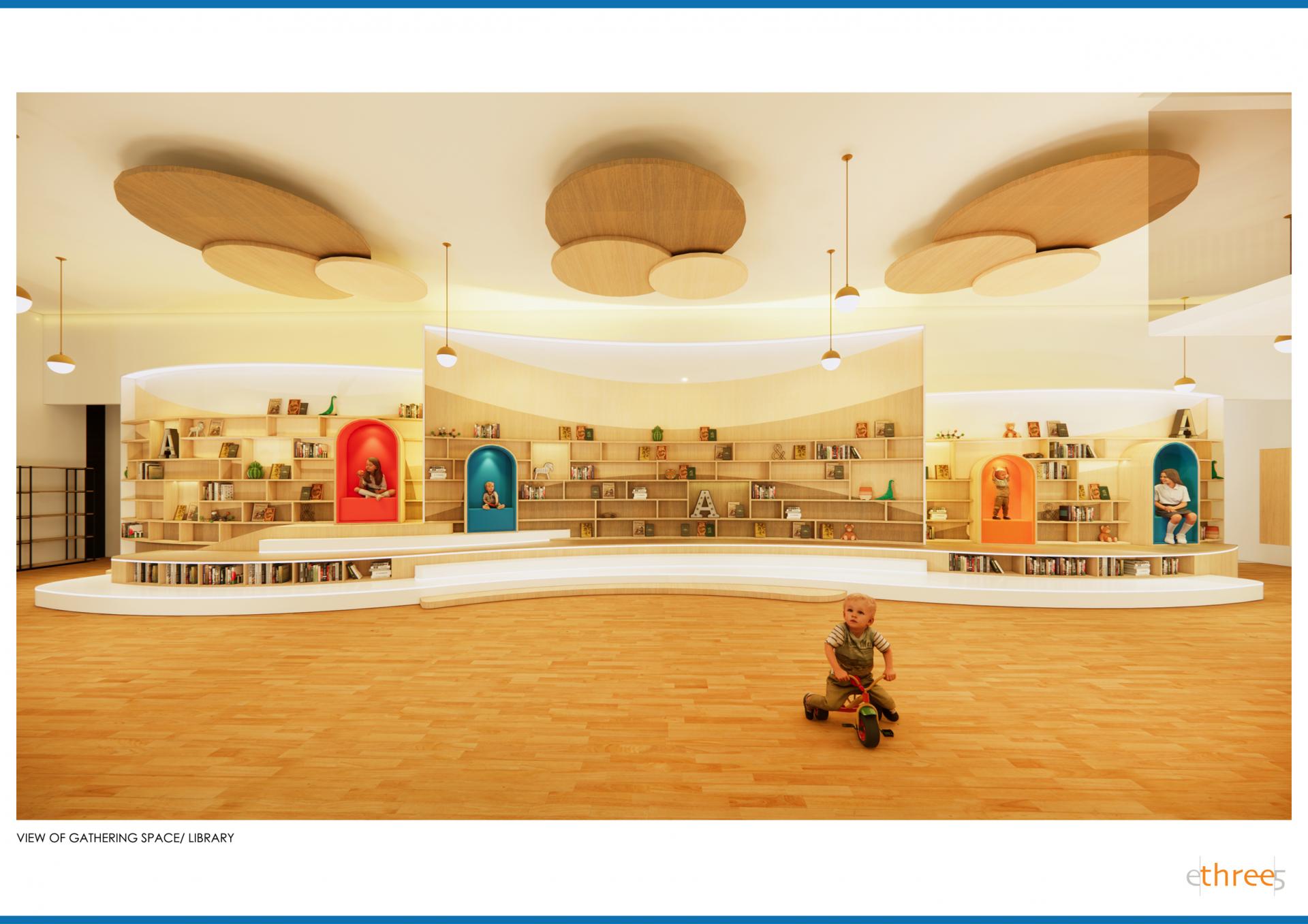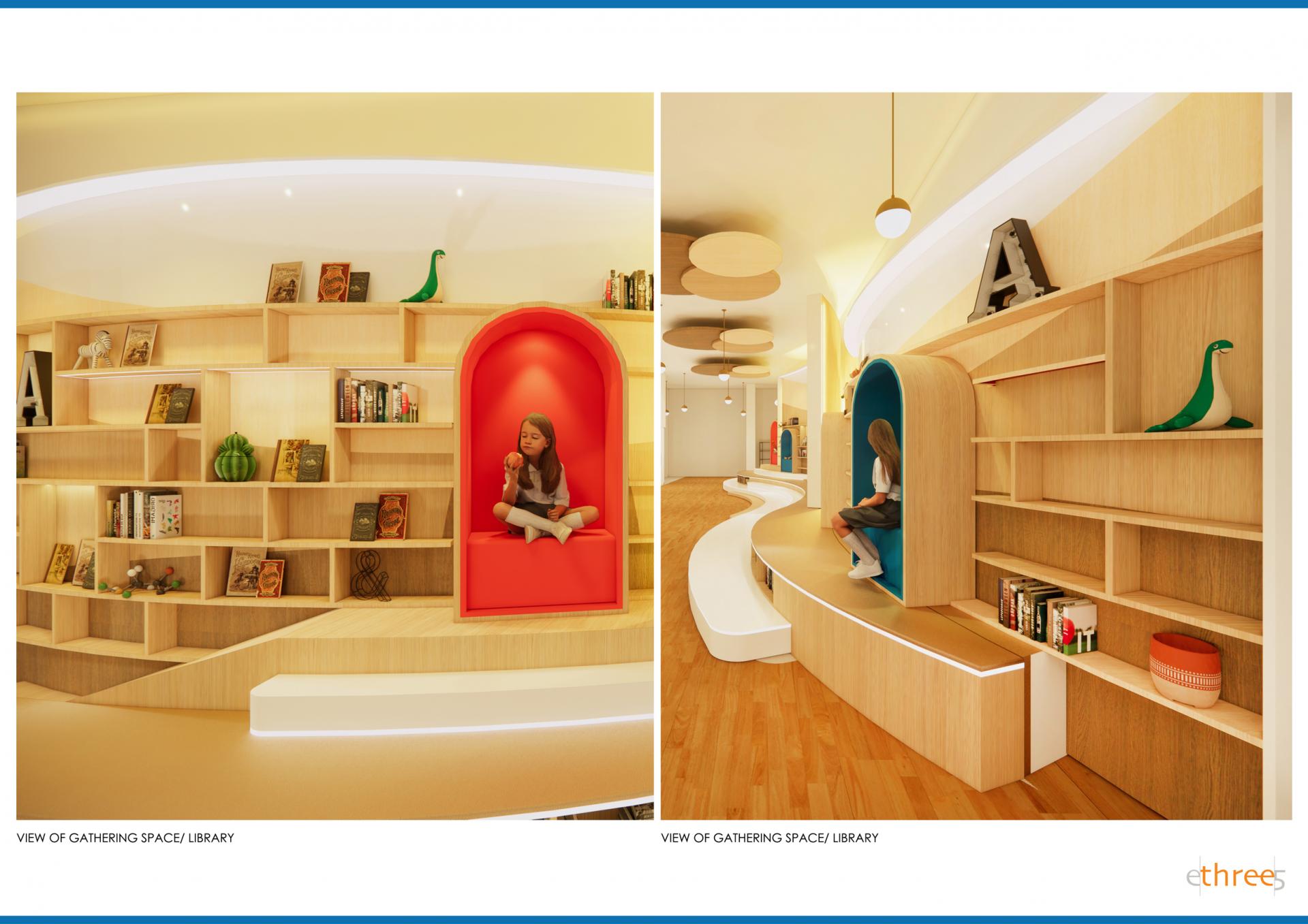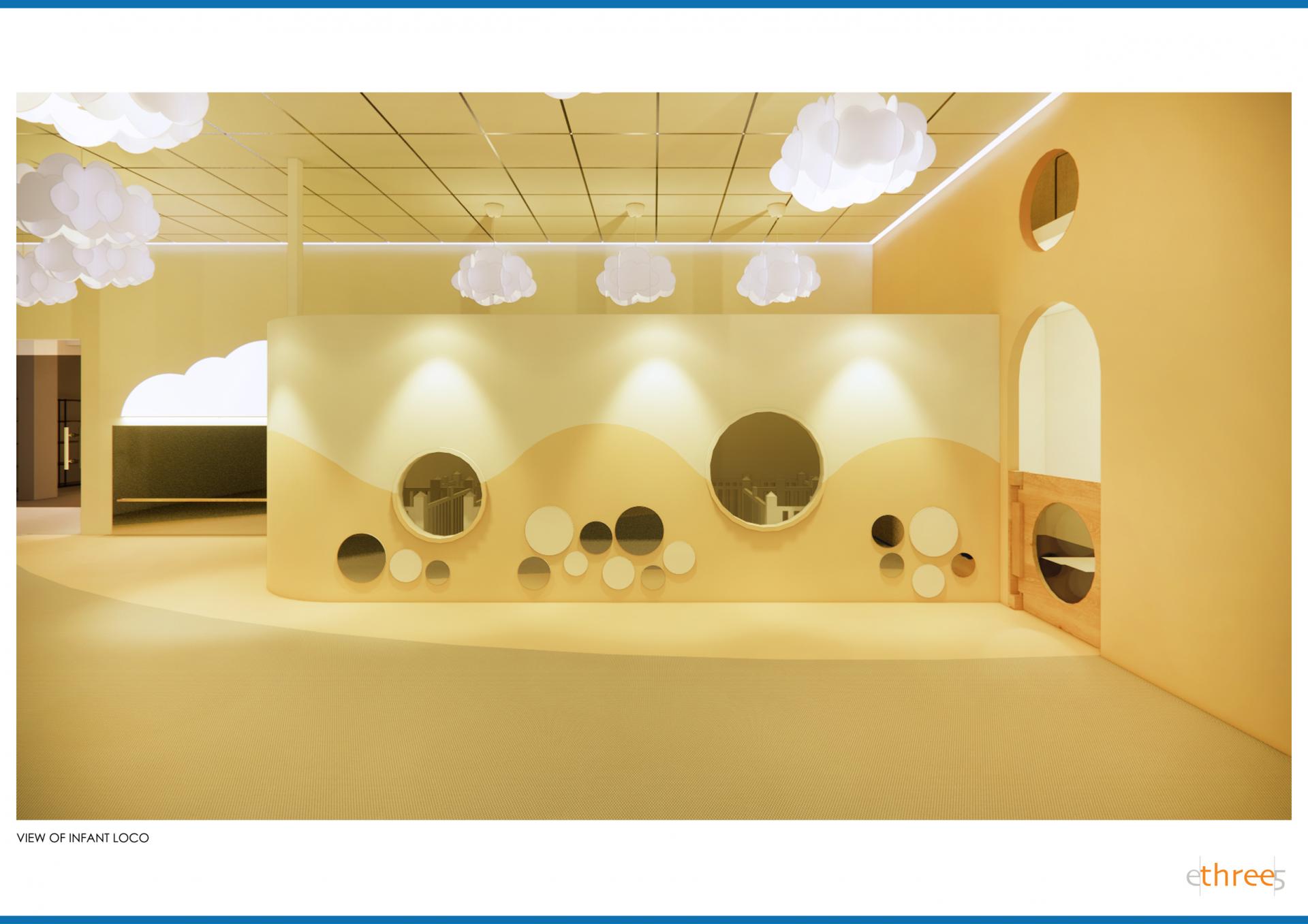2023 | Professional

Children's Cove @ Pasir Ris
Entrant Company
E Three Five Pte Ltd
Category
Interior Design - Institutional / Educational
Client's Name
Children's Cove Preschool Pte Ltd
Country / Region
Singapore
Children’s Cove Preschool embraces the concept of a fertile learning environment by creating a nurturing and inspiring space that fosters growth, exploration, and a lifelong love for learning. It encourages children to connect with nature, engage their senses, and actively participate in their own learning process.
The spatial design focuses on creating a space that nurtures curiosity, promotes engagement, and encourages holistic development.
Design Strategies:
1) Nature Elements: The preschool incorporates nature elements throughout the space to create a sense of connection with the environment. Natural light permeates through the learning spaces to create a warm and welcoming ambiance. Indoor plants and greenery are strategically positioned to provide a calm and robust environment.
2) Flexible Learning Spaces: The preschool offers flexible learning spaces that can be easily be adapted to accommodate different activities and learning styles. Classrooms are designed to be open and spacious, allowing for individual, small-group, and whole-group activities. Movable furniture, such as modular seating and adjustable tables, enables the creation of different learning configurations. These flexible spaces encourage collaboration, independent exploration, and imaginative play.
3) Exploration and Discovery Areas: Specific areas within the preschool are designated for exploration and discovery. These common learning areas are equipped with age-appropriate materials, resources, and tools that inspire children to explore, investigate, and engage in open-ended play.
4) Reggio Emilia Influence: The design concept draws inspiration from the Reggio Emilia approach, which places importance on child-led learning and self-expression. The preschool includes ateliers, or creative studios, where children can engage in various artistic and expressive activities. These spaces are equipped with a wide range of art materials, natural materials, and open-ended materials to encourage creativity, problem-solving, and self-expression.
5) Multi-Sensory Learning Environments: The spatial design prioritizes multi-sensorial experiences to support children's cognitive, emotional, and physical development. Sensory stimulating and tactile surfaces, quiet zones with cozy seating, and outdoor play spaces with varied textures provide opportunities for children to engage their senses and explore the world around them.
Credits

Entrant Company
CHICMAX
Category
Packaging Design - Cosmetics & Fragrance

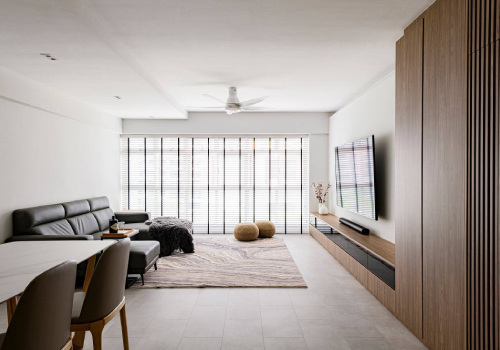
Entrant Company
Fyner Interior Pte Ltd
Category
Interior Design - Residential

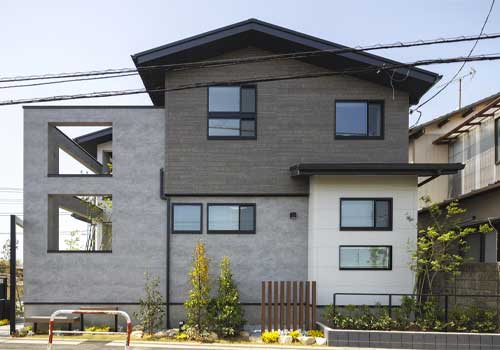
Entrant Company
CHUO GREEN DEVEROPMENT Co.,Ltd
Category
Architectural Design - Urban Design

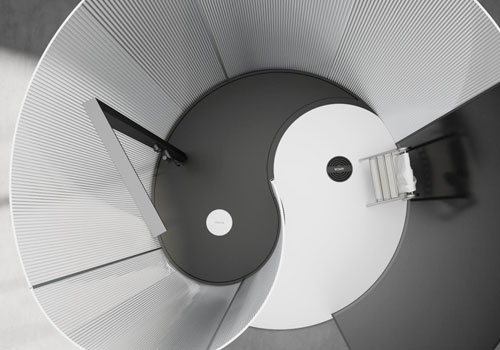
Entrant Company
Guangdong 1858 Home Co.
Category
Product Design - Bathroom Fittings / Appliances

